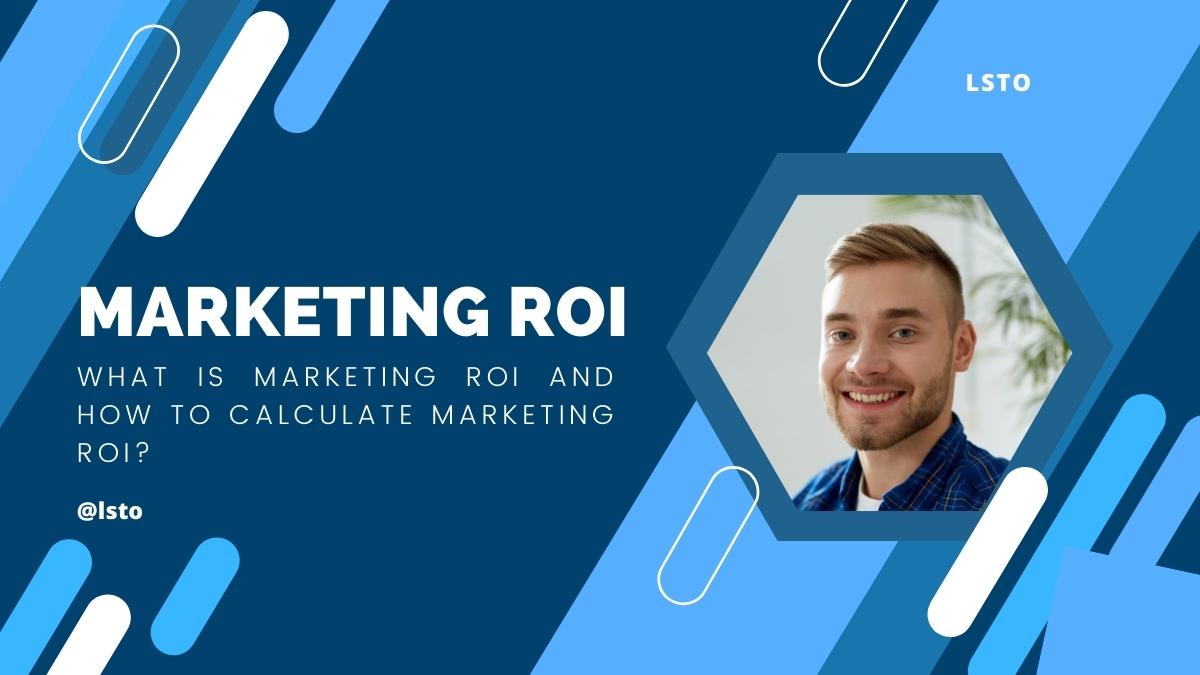
Marketing ROI is a measure of the return on investment for marketing campaigns. It can be used to track the performance of individual campaigns or to compare the effectiveness of different marketing channels.
Marketing ROI is calculated by dividing the value of a campaign (in terms of sales or leads generated) by the cost of the campaign.
For example, if a campaign generates $100 in sales and costs $50 to run, then its marketing ROI would be 2 ($100/$50).
A high marketing ROI means that a company is getting more out of its marketing spend than it is putting in. A low marketing ROI indicates that a company could be spending its marketing budget more effectively.
Companies use marketing ROI to make decisions about where to allocate their marketing resources.
Content Marketing ROI:
The Content Marketing Institute (CMI) defines content marketing as a strategic marketing approach focused on creating and distributing valuable, relevant, and consistent content to attract and retain a clearly defined audience — and, ultimately, to drive profitable customer action.
But what does that mean for your bottom line? What is the return on investment (ROI) of content marketing? Here’s a look at how to calculate the ROI of your content marketing efforts.
There are a number of factors that go into calculating the ROI of content marketing. The first is understanding your cost per lead (CPL). This is the total cost of your content marketing divided by the number of leads generated. For example, if you spend $5,000 on your blog per month and generate 50 leads, your CPL is $100.
Influencer Marketing ROI:
As the social media landscape continues to evolve, so does the role of influencer marketing. No longer can marketers rely on a small group of celebrities with large followings to sell their products. Instead, they must identify and work with individuals who have genuine relationships with their audience.
But with so many options available, how can marketers know which influencers will provide the best return on investment? And once they’ve found the right partners, how can they measure the success of their campaigns?
Fortunately, there are some tried and true methods for finding and measuring the ROI of an influencer marketing campaign. By following these steps, marketers can be sure they’re getting the most bang for their buck.
Social Media Marketing ROI:
Social media marketing is a great way to connect with potential and current customers. It allows businesses to reach a larger audience with minimal effort and expense. But how do you know if your social media marketing efforts are actually paying off? The answer is by tracking your ROI.
There are several ways to measure social media marketing ROI. One way is to track the number of leads generated from social media channels. Another way is to calculate the cost per click of your social media ads. And yet another way is to simply ask customers how they found out about your business.
No matter which method you choose, tracking your social media marketing ROI will give you valuable insights into whether or not your efforts are worth the time and money. If you’re not seeing a positive return on investment, don’t be discouraged – keep experimenting until you find what works for your business.
SMS Marketing ROI:
SMS marketing promises a high ROI, but does it deliver?
Many businesses turn to SMS marketing in hopes of experiencing a high return on their investment. After all, SMS messages have a 98% open rate, making them one of the most effective ways to reach customers.
But while SMS messages may have a high open rate, that doesn’t necessarily mean they’re effective at driving conversions. In fact, many customers find SMS messages to be intrusive and annoying. As a result, SMS marketing campaigns often have low conversion rates.
So what does that mean for your business? If you’re thinking about using SMS marketing, you need to make sure you have a well-crafted strategy in place. Otherwise, you could end up wasting your time and money on a campaign that doesn’t deliver results.
B2b Marketing ROI:
Business-to-business marketers are always looking for ways to improve their return on investment (ROI). After all, marketing is a major expense for most companies. And while there are many ways to measure ROI, it can be a challenge to determine which metrics are most important.
There are a few key things to keep in mind when measuring ROI for your b2b marketing campaigns. First, consider the entire sales cycle from start to finish. It’s important to track leads and customers from initial contact through purchase. This will give you a better idea of how your marketing efforts are impacting the bottom line.
Next, focus on quality over quantity. It’s better to have a few high-quality leads than a large number of unqualified ones. Finally, don’t forget about the lifetime value of a customer.
What Is A Good Marketing ROI
What is a good marketing ROI? This is a question that many businesses have, but the answer may vary depending on the business. For some businesses, a good marketing ROI might be 2x or 3x, while other businesses might consider a 5x return to be good. There are a few factors that go into determining what is a good marketing ROI for your business.
The first factor to consider is your business goals. What are you hoping to achieve with your marketing efforts? If you’re looking to increase brand awareness or generate leads, then a lower ROI might be acceptable. But if you’re looking to increase sales or grow your customer base, then you’ll need to aim for a higher ROI.
Another factor to consider is your industry. Some industries are very competitive and have high advertising costs, so achieving a high ROI can be difficult.
How To Calculate Marketing ROI
Any business’s success depends on its marketing strategy’s effectiveness in driving sales. A necessary component of a marketing strategy is the measurement of return on investment (ROI). Marketing ROI measures the connection between what is spent on marketing activities and leads to bottom-line results. Without this metric, it would be impossible to know whether or not a company’s marketing efforts are successful. The calculation for marketing ROI is as follows:
Marketing ROI = (Revenue from Campaign – Cost of Campaign) / Cost of Campaign
The first step in calculating Marketing ROI is understanding what your company’s revenue was from the campaign. This can be done by looking at sales records or using analytics tools if the campaign was online. The second step is knowing how much the campaign costs. This includes all money spent on things like advertising, labor, and materials.
The Benefits Of Tracking Marketing ROI
There are a number of benefits to tracking marketing ROI. Perhaps the most important is that it allows businesses to see which marketing activities are generating the most return on investment. This information can then be used to make decisions about where to allocate future marketing budgets.
Another benefit of tracking marketing ROI is that it can help businesses to improve their overall marketing strategies. By analyzing which campaigns are performing well and which are not, businesses can identify areas where they need to make changes. This can lead to more effective and efficient marketing in the future.
Finally, tracking marketing ROI can also provide valuable insights into customer behavior. This information can be used to better target customers with relevant and personalized messages. Ultimately, this can lead to more sales and higher levels of customer satisfaction.
The Challenges Of Measuring Marketing ROI
In the world of marketing, it is essential to know if your campaigns are working. Are you reaching your target audience? Are they engaged with your content? Measuring marketing ROI can be difficult, but it’s important to find out if your efforts are paying off.
There are a number of challenges when it comes to measuring marketing ROI. First, you need to identify the right metric to track. This can be difficult, as there are many factors to consider. Second, you need to have a way to track and measure the results of your campaigns. This can be tricky, as some results may take longer than others to appear. Finally, you need to make sure that you’re comparing apples to apples when looking at your data. Otherwise, you won’t be able to accurately gauge your progress.
Conclusion
Marketing ROI is a very important metric to track when it comes to your marketing campaigns. By tracking your Marketing ROI, you will be able to see how effective your marketing campaigns are and make necessary changes if needed. There are many different ways to calculate Marketing ROI, but the most important thing is to use the method that makes the most sense for your business.




